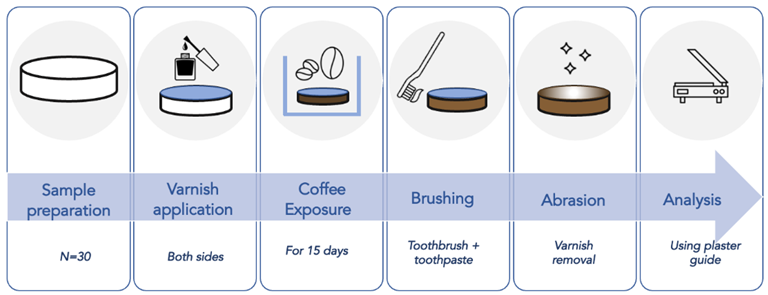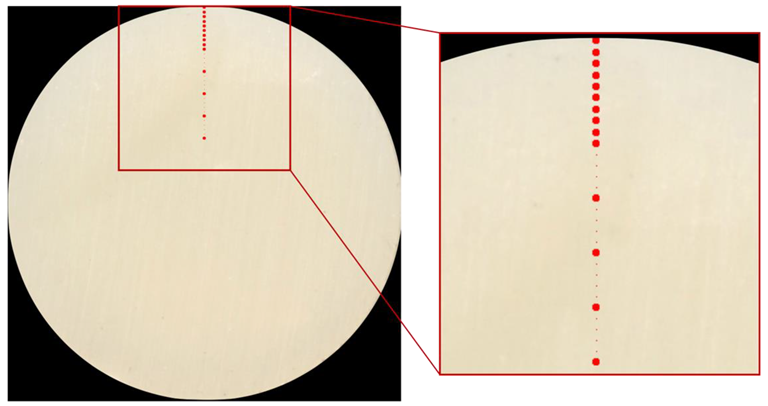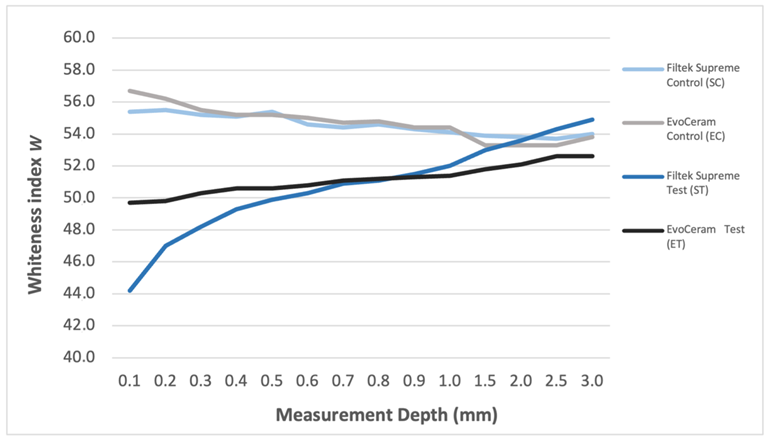Composite resins are the preferred material for dental surgical restorations due to their pleasing aesthetic and structural qualities. Giachetti et al. have published research in the journal Materials that aims to determine the extent of color infiltration into composite resins to resolve the problem of discoloration.

Study: Stain Susceptibility of Composite Resins: Pigment Penetration Analysis. Image Credit: Meaw_stocker/Shutterstock.com
Significance of Composite Resins
Composite resins are widely used for dental restorations in both anterior and posterior teeth. This is because these polymers have both pleasing aesthetic and structural qualities, enabling a minimally invasive approach. The color stability and exterior refining and polishing of resin composite implants are critical to their success.

Test groups specimens preparation. Image Credit: Cinelli F. et al., Materials
Failure Causes in Composite Resins
One of the most typical reasons for composite resin recovery failure is discoloration and borderline spots.
Discoloration produces color disparity, leading to patient discontent and increased costs for restorative correction/replacement. External factors or intrinsic causes can induce discoloration of resin-based substances. Extrinsic influences include colorant absorption as a result of impurities from environmental factors. Exterior discolorations in resin composites are associated with cleanliness, dietary habits, and smoking habits.
The intrinsic factors include discoloration of the composite resin, as well as changes in the matrix material and the boundary between the substrate and the additives.
Factors Affecting Discoloration and Color Stability
The internal factors include discoloration of the composite resin themselves, as well as changes in the resin matrix and the boundary between the substrate and the additives. Color durability of resin composites is precisely correlated to the particle size of granules, variety, quantity, substrate and polymer category, degree of polymerization, and water permeability.
Materials Utilized
The study examined two commonly available composite resins. The first one is a nano-filled composite resin and the second one is a non-homogeneous micro-hybrid composite resin. The samples were created using a tubular polypropylene mold with a diameter of 2.0 mm and an inner diameter of 8.4 mm.

The image shows a schematic representation of different measurement levels. Image Credit: Cinelli F. et al., Materials
Research Findings
This research looked at 80 samples created from two distinct types of composite resins. The test groups were aged for 15 days by immersing them in a coffee beverage solution at 37 °C. For the duration of the study, control group samples were soaked in physiologic solution at 37 °C.
The color assessment was carried out using the CIELab methodology, and the W (whiteness) factor was determined for each location. Based on CIELab data, W is an independent whiteness index. The W values of the two composite resins submerged in the physiological fluids follow a consistent trend and show no vibrant colors at any measurement level.
As Filtek Supreme composite resin was pigmented, it changed color significantly up to 1mm in depth when contrasted to the same resin maintained without chromogenic ingredients. The EvoCeram composite resin, on the other hand, changed statistically significantly until 2 mm. Filtek Supreme appeared to be more stain-prone, most likely due to its nano-aggregated crystalline structure.
How to Restore Natural Color
When the coloring of the composite becomes clinically undesirable, the original color must be restored. One method would be to eliminate the restoration's outer surface and replace it with new material. Otherwise, the overall restoration must be replaced. The potential of recovering the original color of the resins by using bleaching agents is also quite appealing.
Limitations
Owing to the aims of the research, some limitations must be addressed. The use of a scanner to analyze the samples may result in a mistake. In reality, the data show that even the control groups have whiter exterior levels, but the inside component has a higher W value. The existence of the white plaster cast, which may reflect back light and influence the coloration of the exterior sections, could be one plausible cause.
In any event, this would be a systemic mistake that would affect both the test and control groups.

The image shows the trend of W for each group. It can be observed that, in the more superficial levels of the specimens, the groups show different values, while, moving towards the center of the specimens, the values tend to become uniform. Image Credit: Cinelli F. et al., Materials
Future Perspective
Although there is a significant amount of research on the pigmentation of composites, the process of discoloration might be investigated further. It is unclear if color accumulation happens solely on the exterior or if it occurs inside the substance, and if so, to what amount. However, it is essential to explore this issue so that the discoloration may be effectively addressed.
To summarize, the two composite resin substances that were pigmented suffered color fluctuation with distinct patterns. On the surface, the Filtek Supreme composite was demonstrated to be more susceptible to color variations than the EvoCeram composite.
Further Reading
Cinelli F. et al. (2022). Stain Susceptibility of Composite Resins: Pigment Penetration Analysis. Materials. 15(14). 4874. Available at: https://www.mdpi.com/1996-1944/15/14/4874
Disclaimer: The views expressed here are those of the author expressed in their private capacity and do not necessarily represent the views of AZoM.com Limited T/A AZoNetwork the owner and operator of this website. This disclaimer forms part of the Terms and conditions of use of this website.